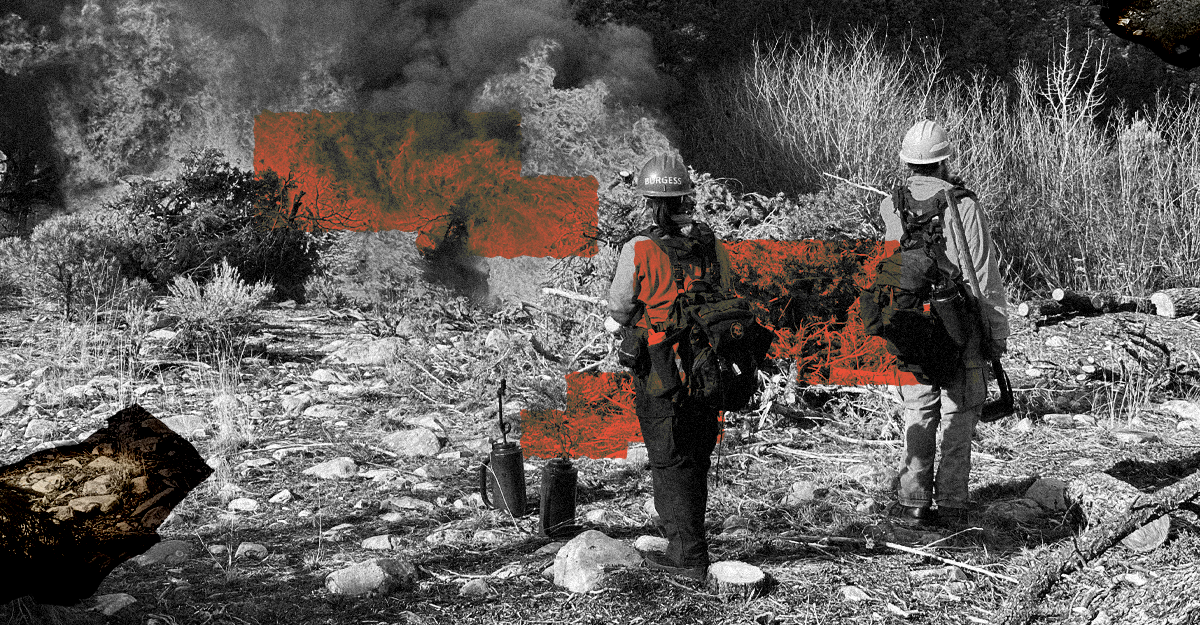
Position on President Trump’s Executive Order “Empowering Commonsense Wildfire Prevention and Response”
President Trump’s Executive Order (EO) “Empowering Commonsense Wildfire Prevention and Response” is the latest of several significant federal policy efforts aimed at tackling the wildfire crisis. Other recent efforts include the passage of the Fix Our Forest Act in the House and introduction of a bipartisan negotiated companion in the Senate; an Executive Order on expanding timber production; and the recently signed Aerial Firefighting Advancement Act of 2025.
The Federation of American Scientists (FAS) focuses on embedding science, data, and technology into government to support communities in preparing for, responding to, and recovering from wildfires. We are encouraged that the Administration and Congress are recognizing the severity of the wildfire crisis and elevating it as a national priority. Yet the devil is in the details when it comes to making real-world progress.
“Wildfires are burning faster and hotter than ever before, destroying communities and ecosystems and producing vast amounts of harmful smoke and debris,” said Dr. Hannah Safford, Associate Director of Climate and Environment at FAS. “As wildfires increasingly impact cities like Los Angeles and states beyond the western U.S., smart federal leadership on this issue is needed.”
FAS applauds several elements of President Trump’s EO. For instance, the EO correctly recognizes that wildfire technology and prescribed fire are powerful tools for reducing risk and strengthening wildfire resilience. FAS is also glad to see the Administration promote interagency coordination; emphasize the importance of state, local, and Tribal leadership; and recognize the intersection of wildfire resilience and other sectors, such as the grid and our bioeconomy.
“However,” said Jessica Blackband, Senior Manager of Climate and Environment at FAS, “the Executive Order also contains elements that do not seem feasible against a backdrop of enacted and proposed cuts to federal wildfire staff, programs, and funding.”
For example, President Trump’s FY2026 budget proposes significant cuts to federal agencies, including the National Oceanic and Atmospheric Administration (NOAA) and the U.S. Geological Survey (USGS) that provide critical data, forecasting tools, and other technical capabilities needed for wildfire preparedness and response (Section 3 of the EO). Workforce shortages in the U.S. Forest Service and partner agencies are raising alarm about readiness for extreme wildfires as well as capacity to carry out risk-reduction projects, including prescribed fires (Sec. 4(a)), safely and successfully. And erosion of federal technical expertise will likely make it difficult for agencies to revise wildfire-related rules (Secs. 4 and 5) in ways that are evidence-based and appropriately balance other health, economic, and environmental priorities.
FAS also has concerns about timelines and processes established in the EO. For example, section 2 gives agencies just 90 days to “consolidate their wildland fire programs to achieve the most efficient and effective use” of resources. This timeline coincides with wildfire season, when agencies are already stretched thin. Moreover, proposals and consensus recommendations for improving wildfire governance are available, including the final report of the Wildland Fire Mitigation and Management Commission. It is unclear how the EO will build on this substantial work.
Finally, FAS believes that the EO overemphasizes deregulation as a strategy for tackling the wildfire crisis. While there may be regulatory barriers or bureaucratic processes that could be streamlined or improved in the interest of wildfire resilience, other opportunities for progress are more potent. FAS recommends that future directives and policies provide greater support for science that improves our understanding of how wildfires impact people and places; technical assistance to support states and localities in wildfire planning; investments to reduce wildfire risk; development of metrics that make it easier to assess and track wildfire resilience; and approaches for ensuring transparent, responsible spending on wildfire.
“Tackling the wildfire crisis will require an integrated national approach that is grounded in evidence, carefully executed, and appropriately resourced,” said James Campbell, Wildfire Policy Specialist at FAS. “The Administration should work closely with Congress and the wildfire community in implementing this EO and any complementary policies.”
FAS stands ready to help advance constructive plans and proposals that further wildfire resilience. Our team is working to build a more fire-resilient nation through policy development and analysis, fellowships, and issue education. We look forward to continuing to engage with the Administration, Congress, and state, local, and nongovernmental leaders to this end.
This year’s Red Sky Summit was an opportunity to further consider what the role of fire tech can and should be – and how public policy can support its development, scaling, and application.
Promising examples of progress are emerging from the Boston metropolitan area that show the power of partnership between researchers, government officials, practitioners, and community-based organizations.
FAS supports the bipartisan Regional Leadership in Wildland Fire Research Act under review in the House, just as we supported the earlier Senate version. Rep. David Min (D-CA) and Rep. Gabe Evans (R-CO) are leading the bill.
The current wildfire management system is inadequate in the face of increasingly severe and damaging wildfires. Change is urgently needed